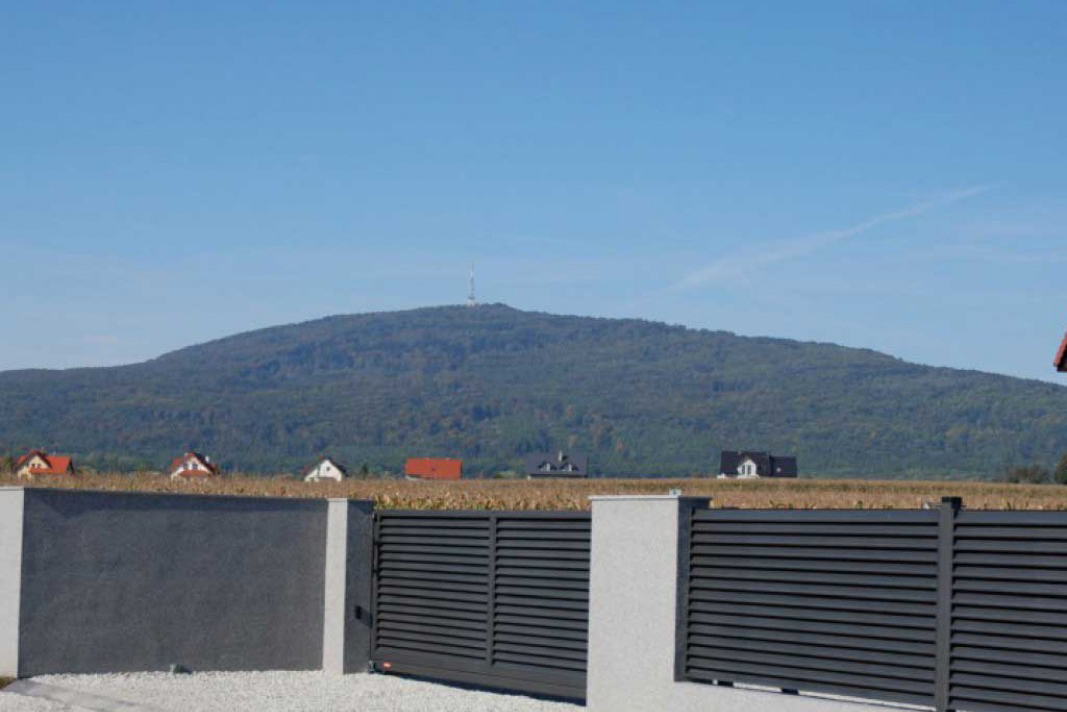
Installing a fence on a sloped terrain presents a significant challenge, especially if aesthetics are a concern. Some individuals consider leveling the ground before installing a fence, but is it worth it? There are many other solutions to make a fence on a slope both attractive and sturdy. All it takes is a bit of commitment and time. Are you looking to build a fence on uneven ground but unsure of how to proceed? Below are a few of our tips.
Dealing with Steep Slopes – What to Do?
A plot located on sloped terrain can pose various difficulties. However, it’s generally not advisable to heavily modify the natural contour of the land before erecting a fence. Before starting fence installation work, you can gently smooth out the unevenness, so the slope isn’t overly pronounced. This approach will greatly enhance the appearance of the fence.
Until recently, chain-link fencing was commonly used on sloped terrain. However, if a chain-link fence doesn’t offer sufficient security for you and you adequately prepare the ground, you can confidently opt for picket, palisade, or gabion fencing. A robust fence made of panels will provide you and your loved ones with maximum security and will look much better than a chain-link fence. Remember that regardless of the terrain, the fence must meet specific criteria.
Panel Fencing on a Slope – Is it Possible?
As it turns out, installing panel fencing on a slope is an excellent solution. Of course, mounting panels on uneven terrain is somewhat complex and time-consuming, but the effort pays off. Fences made from aluminum panels look very stylish, especially when their color and pattern match the other elements on the property. Investing in panels is an ideal choice, particularly if you want your property’s fence to be durable and weather-resistant.
Depending on the contour of the plot, you can choose to install the fence in a parallel or cascading manner. If you want the fence to follow the slope of the hill, opt for panels adjusted to the angle of the incline. Employing panels in a parallel installation technique will result in uneven steps. If you’re a perfectionist and prefer a more aesthetic look, choose to lower each panel by the same height. Installing fence panels cascading down the slope is labor-intensive but offers better adaptation to the terrain.
Fencing on Uneven Terrain – Where to Begin Installation?
Regardless of the chosen fence type, before commencing installation work, you must assess the condition of the ground. The slope on which the fence will be built must be stable. If there’s a risk of the slope collapsing, you should reinforce it. Otherwise, intense rain or wind could damage the fence.
Only once the ground is prepared should you mark the boundaries and the spots where the posts should be placed. Regardless of the terrain, the posts must be set vertically and at even intervals. Installing panel fencing on uneven land demands precision. For stability, sink the posts into holes approximately 1 meter deep and 30 centimeters wide. Creating formwork before pouring concrete is advisable, although it’s a more time-consuming method.
Subsequent stages of fence installation depend on the chosen materials. Fence panels look best when installed on decorative plinths. If you prefer, you can also mount them on a concrete base, though this is a much more time-intensive option.
What About the Gate and Entrance?
When planning your fence, consider where to install the entrance gate and pedestrian gate. For ease of use, the terrain around the entrance and walkway to the property should be leveled. You can attempt to smooth out small elevations on your own. However, if the slope’s contours are highly varied, enlist the services of a team equipped with specialized tools.